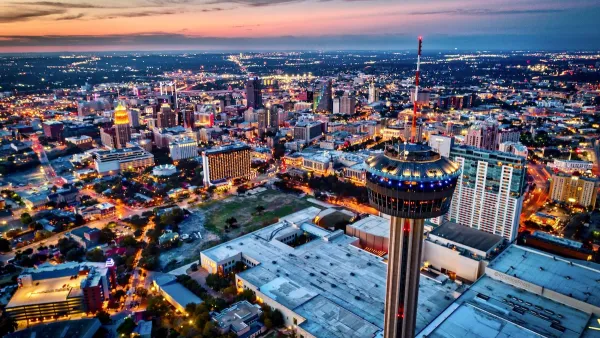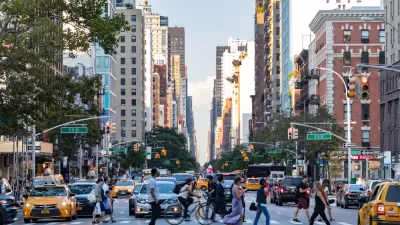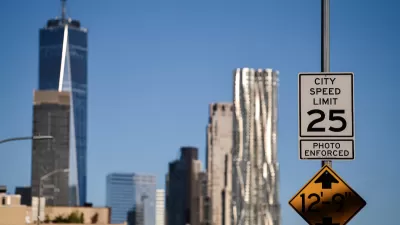It won't take the approval of the state legislature to reduce speed limits on many of New York City's residential streets, just a City Council bill that takes advantage of a loophole in existing state law.
Driven in part by the anguished voices of victims' families, New York City's elected officials are looking for ways to make the city's streets safer for pedestrians. One option being considered is to reduce speed limits on residential streets to 20 miles per hour. "One big stumbling block: such a move would require the approval of the state legislature," explains Kate Hinds.
"But there is a loophole," she adds. It turns out that existing state law allows cities to lower speed limits to 15-24 miles per hour within a quarter mile of a school.
"Here's the upshot: 55 percent of all New York City streets are within a quarter mile of a school," notes Hinds in presenting the results of analysis conducted by WNYC/Transportation Nation. "In Manhattan, that number climbs to 75 percent. Seventy-one percent of Brooklyn's streets are in a school zone. In the Bronx, it's 64 percent; in Queens, 48 percent; and in Staten Island, 28 percent of all streets are in a school zone."
FULL STORY: MAP: Limiting Speeds Near Schools Would Affect Most City Streets

Planetizen Federal Action Tracker
A weekly monitor of how Trump’s orders and actions are impacting planners and planning in America.

Chicago’s Ghost Rails
Just beneath the surface of the modern city lie the remnants of its expansive early 20th-century streetcar system.

San Antonio and Austin are Fusing Into one Massive Megaregion
The region spanning the two central Texas cities is growing fast, posing challenges for local infrastructure and water supplies.

Since Zion's Shuttles Went Electric “The Smog is Gone”
Visitors to Zion National Park can enjoy the canyon via the nation’s first fully electric park shuttle system.

Trump Distributing DOT Safety Funds at 1/10 Rate of Biden
Funds for Safe Streets and other transportation safety and equity programs are being held up by administrative reviews and conflicts with the Trump administration’s priorities.

German Cities Subsidize Taxis for Women Amid Wave of Violence
Free or low-cost taxi rides can help women navigate cities more safely, but critics say the programs don't address the root causes of violence against women.
Urban Design for Planners 1: Software Tools
This six-course series explores essential urban design concepts using open source software and equips planners with the tools they need to participate fully in the urban design process.
Planning for Universal Design
Learn the tools for implementing Universal Design in planning regulations.
planning NEXT
Appalachian Highlands Housing Partners
Mpact (founded as Rail~Volution)
City of Camden Redevelopment Agency
City of Astoria
City of Portland
City of Laramie




























